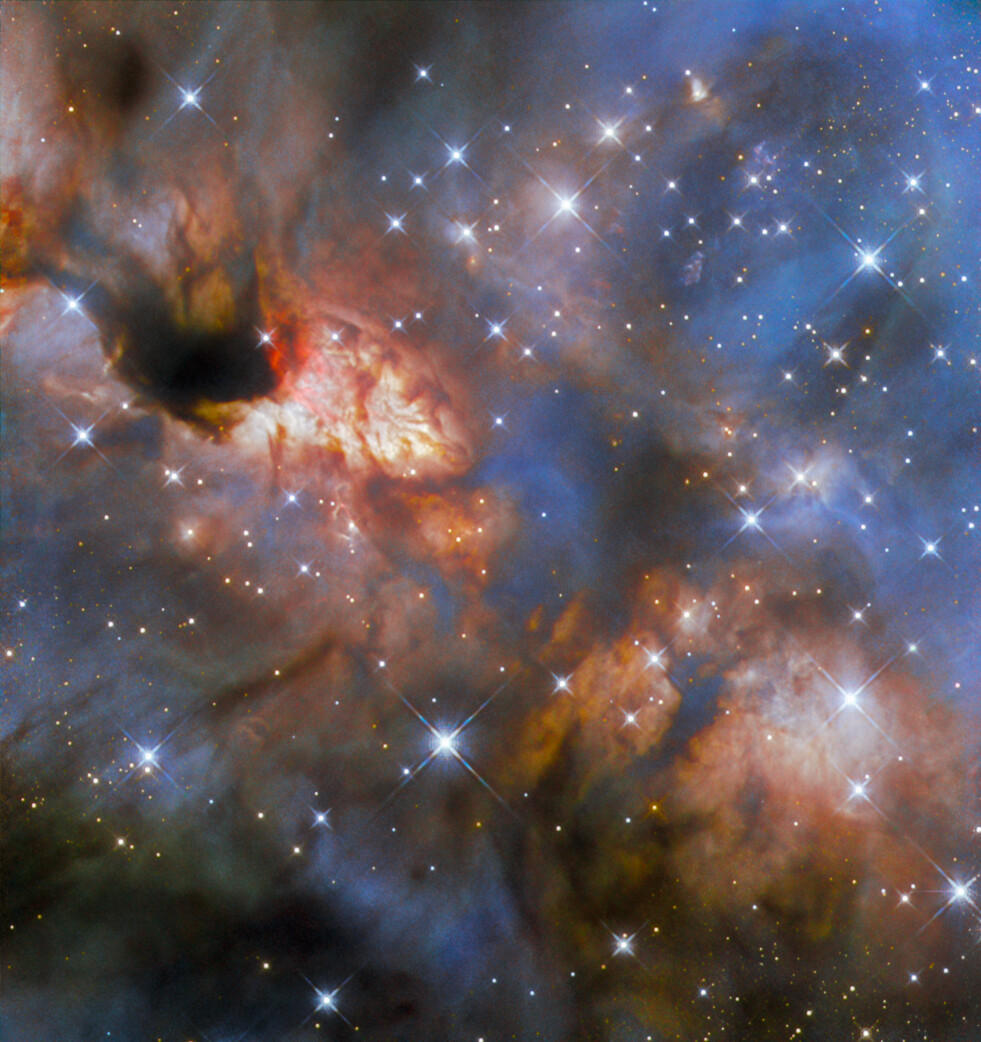Space photo of the week: A young star sweeps up its cosmic neighborhood in vibrant new Hubble image
The Hubble Space Telescope's latest image is a riot of orange, blue and violet — and a lesson in how plucky young stars clear their dusty neighborhoods.

What it is: A star-forming nebula called IRAS 16562-3959
When it was published: Feb. 21, 2024
Where it is: 5,900 light-years from Earth in the constellation Scorpius.
Why it's so special: Not only is Hubble's latest image of a star-forming nebula exquisitely detailed and packed with activity, but it's also unusually colorful. It didn't start that way. Hubble's 16-megapixel Wide Field Camera 3 is fitted with four filters, each of which only allows very specific wavelengths of light to pass through. These wavelengths include ultraviolet and near-infrared light, which are invisible to the human eye. The resulting datasets that astronomers receive on Earth are black and white, but by assigning colors to each wavelength, it's possible to build a color image. That's vital because it means we can see beautiful images like this and astronomers can figure out what's going on more easily.
Related: 25 gorgeous nebula photos that capture the beauty of the universe
But this image of IRAS 16562-3959 is a little different. Although it uses the same color filters as most other Hubble images, the telescope collected only infrared light. So, image specialists selected bluer colors for shorter wavelengths and redder colors for longer wavelengths.
The result is a dramatically colored image with depth. The glow in the top-left and bottom-right corners comes from the light of stars being born. In the middle of the image is a dust cloud in front of the nebula, obscuring its light. Stars also sit in front of the nebula while gas and dust surround it.
Sign up for the Live Science daily newsletter now
Get the world’s most fascinating discoveries delivered straight to your inbox.
Scientists believe IRAS 16562-3959 hosts a massive protostar — a star still being formed — that's about 30 times the sun's mass. The center of the image is too obscured by dust to show the star’s shine; but brighter regions to the upper left and lower right of center are thought to be areas where the young star's powerful jets of radiation are pushings gas away, revealing the cosmic landscape beneath.

Jamie Carter is a freelance journalist and regular Live Science contributor based in Cardiff, U.K. He is the author of A Stargazing Program For Beginners and lectures on astronomy and the natural world. Jamie regularly writes for Space.com, TechRadar.com, Forbes Science, BBC Wildlife magazine and Scientific American, and many others. He edits WhenIsTheNextEclipse.com.










